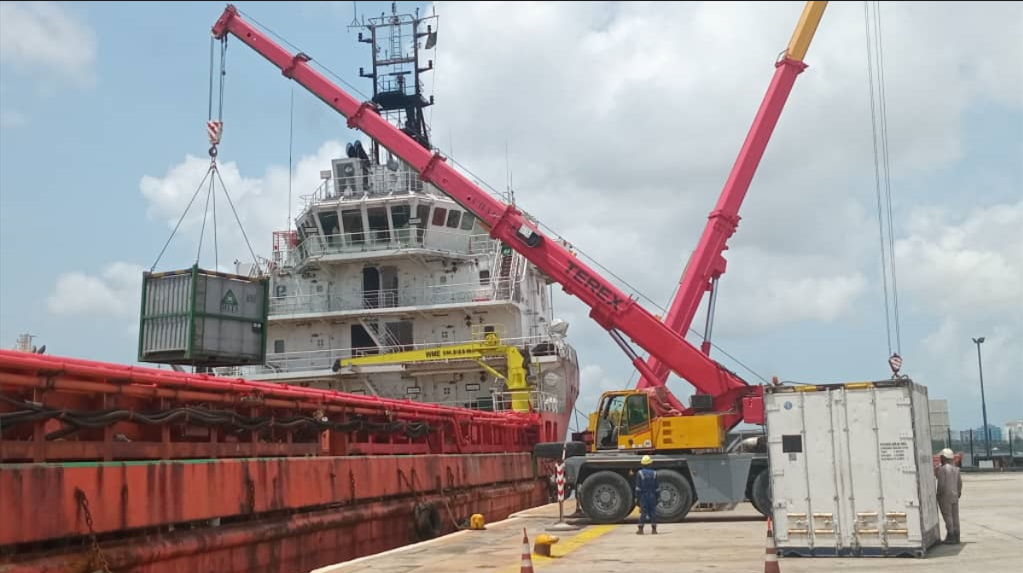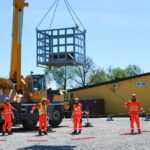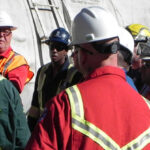
Lifting operation is one of the major causes of fatalities and serious incidents in the construction, marine, and oil and gas industries.
Every type of lifting operation has a set of risks that need to be managed or plan if the lift is to be undertaken in a safe and efficient manner.
It is a regulatory requirement and also an important safety enhancement, that prior to any lifting operations being carried out, lifting plans must be produced and hazard identification and risk assessments carried out.
According to LOLER Regulation 8 (Organization of Lifting Operations), employers must ensure that every lifting operation involving lifting equipment is properly planned by a competent person, appropriately supervised and carried out in a safe manner.
The level of planning increases with the complexity of the lifting operations as does the required level of supervision.
Procedures for planning a lifting operation
1. Planning and Preparation
• Draw up a Hoisting/Lifting Plan – All lifting operations should have a lift plan supported by an analysis of the hazards and risks. Lift plans may be separate documents or can be part of other documents.
Routine lifts may only require a generic lift plan supported by an onsite risk assessment and team briefing whereas complex or critical lifts may need specific lift plan and significant engineering design effort.
• Prepare a Task Risk Assessment – Once your lift plan is complete and you have a step by step procedure, this should be subjected to a risk assessment.
The purpose of a risk assessment is to identify hazards and their consequences, to enable control measures to be put in place to reduce them to an acceptable level ALARP (As Low As Reasonably Practicable), or eliminate them completely.
2. People and equipment
- Appoint a dedicated hoisting/lifting team – The lifting team should be familiar with the task, i.e. what is to be lifted, weight of the load, what lifting equipment is to be used, and the travel path. All personnel involved in the lifting operation should have their individual responsibilities clearly allocated.
- Appoint a Person in Charge (PIC) – The PIC is designated as being in charge of coordinating, controlling and executing the lift. The PIC reviews the lift plan and ensures that the required controls are in place and the lift is carried out following the lift plan.
- Check that the lifting equipment is suitable for the job – The lifting equipment selected should be fit for use, free from any defects and should have a valid inspection certificate. The lifting equipment should be marked with the safe working load (SWL) or working load limit (WLL) and identification number.
3. Location and surroundings
- Assess Environmental conditions – Environmental conditions or factors which may affect the lifting operations should be taken into account. These factors include wind, sea state, ground condition, poor visibility, rainfall, fog.
- Prepare the lay down area – The landing area for the load should be prepared with barriers, and capable to take the weight of the load.
4. The Task
- Hold a toolbox meeting before starting the task – Before starting lifting operations, the person in charge will hold a pre-job meeting or toolbox talk to explain the lift plan to everybody in the lift team, confirm their understanding of the lift plan and the hazards involved.
- Know your specific task(s) – All personnel involved in the lifting operations are made aware of their roles and responsibilities and what the lifting operation involves.
- Check load integrity and stability – The integrity and stability of loads should be verified before lifting. Load shall not exceed dynamic and/or static capacities of the lifting equipment.
- Barricade the area – Barriers should be place to prevent unauthorised personnel from encroaching the lifting operation area.
- Review “stop the job triggers” – If there are changes or deviations from the lift plan, the task must stop and be re-assessed along with the risk assessment.
5. Evaluation
- Hold debriefing after completion – After completion of a lift, a debrief session should be held to provide all personnel with an opportunity to identify learning points, good practices and improvements.
Any learning points noted on the lift plan should be reviewed by the competent person and subject to action as appropriate. For example, this may include feedback on lifting equipment effectiveness, lifting operations techniques, communication and so on. The information from the debriefing could be vital to the next lifting operations.
To ensure competence of personnel and safety in your lifting operations, contact us for our lift planning and supervision training through our website: www.primeliftsafetyng.com or call +234 9115687051. Email us at training@primeliftsafetyng.com










